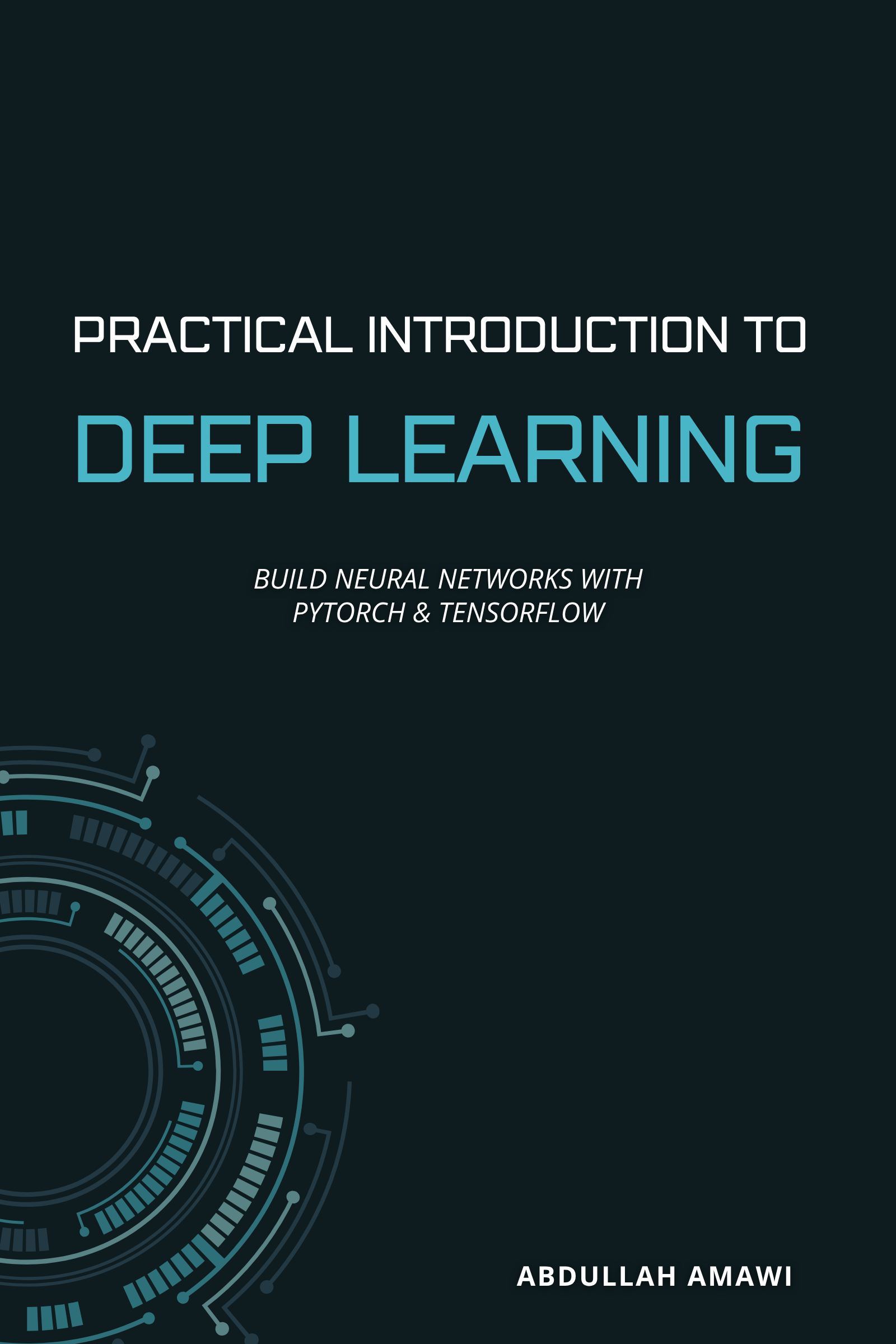Practical Introduction to Deep Learning
Build Neural Networks with PyTorch & TensorFlow
Preface

Welcome to Practical Introduction to Deep Learning!
This book is designed for beginners and those seeking a refresher on deep learning fundamentals. It takes a hands-on, code-first approach using both PyTorch and TensorFlow/Keras—the two most popular deep learning frameworks.
Who This Book Is For
- Beginners starting their deep learning journey
- ML practitioners transitioning from classical ML to deep learning
- Students looking for practical, implementable examples
- Developers wanting to learn both PyTorch and TensorFlow
- Anyone who learns best by doing
What You’ll Learn
By the end of this book, you’ll be able to:
- Build deep neural networks from scratch
- Create computer vision models with CNNs
- Work with sequential data using RNNs and LSTMs
- Apply transfer learning to leverage pre-trained models
- Implement modern architectures (Transformers, GANs, Autoencoders)
- Train and debug deep learning models effectively
- Deploy real-world deep learning applications
- Bonus: Compare PyTorch and TensorFlow implementations side-by-side
Prerequisites
- Required: Basic Python knowledge and familiarity with NumPy
- Helpful: Understanding of machine learning fundamentals (see our companion book: Practical Introduction to Machine Learning)
- Not required: Prior deep learning experience or advanced mathematics
Unique Features
Dual Framework Approach
Every code example in this book includes two tabs:
# PyTorch implementation
import torch
print("You'll see PyTorch code here")# TensorFlow/Keras implementation
import tensorflow as tf
print("And TensorFlow code here")Why both? You can follow the entire book with either framework. Simply stick to your chosen tab throughout!
Smart Hardware Guidance
We’ve optimized all examples to run on:
- CPUs (your laptop)
- Free cloud GPUs (Google Colab, Kaggle)
- Personal GPUs (NVIDIA cards with 4GB+ VRAM)
Each chapter includes smart batch size selection and clear GPU/CPU guidance.
How to Use This Book
Choose Your Path:
- PyTorch Only: Click the “PyTorch” tab in all code examples
- TensorFlow Only: Click the “TensorFlow” tab in all code examples
- Learn Both: Switch between tabs to compare implementations
Recommendation for Beginners: Start with PyTorch (more Pythonic) or TensorFlow (industry standard). Both are excellent choices!
Book Structure
This book is organized into 5 parts with 14 chapters:
Part 1: Foundations (Chapters 1-3) - Environment setup, neural network basics, your first DNN
Part 2: Computer Vision (Chapters 4-6) - CNNs, image data, transfer learning
Part 3: Sequential Data (Chapters 7-8) - RNNs, LSTMs, text processing
Part 4: Optimization & Debugging (Chapters 9-11) - Training strategies, regularization, evaluation
Part 5: Real-World Applications (Chapters 12-14) - Projects, exercises, advanced topics (Transformers, GANs, Autoencoders)
Each chapter includes interactive code examples you can run and modify.
Code & Resources
- All code examples are tested and ready to run
- GitHub repository: [Link to be added]
- Free GPU access: Google Colab and Kaggle instructions included
- Hardware recommendations: Visit tensorrigs.com for ML/DL hardware guides
Let’s get started building neural networks!
About the Author
Abdullah Amawi is a Graduate Research Assistant at Georg-August-Universität Göttingen, where he specializes in AI and Machine Learning with a focus on high-performance computing systems. He teaches machine learning at the master’s level, bringing both academic rigor and practical industry experience to his instruction.
Abdullah’s master’s thesis, “Optimizing I/O Performance of Scalable ML Workflows in HPC Systems,” reflects his deep expertise in making machine learning efficient and scalable. With over 15 years of technical consulting experience and hands-on work managing GPU infrastructure for AI research labs, he bridges the gap between theoretical ML/DL concepts and real-world implementation.
As the creator of TensorRigs.com, Abdullah helps researchers, developers, and ML/DL enthusiasts make informed decisions about AI hardware through spec-driven analysis and practical recommendations. His unique perspective comes from working directly with large-scale ML workflows in HPC environments, giving him insight into what really matters for production machine learning and deep learning systems.
Abdullah is the author of “Practical Introduction to Machine Learning” and “Practical Introduction to Deep Learning”. He believes that the best way to learn ML/DL is through hands-on experience with real datasets and clear, concise explanations—a philosophy that guided the creation of both books.
Connect: Portfolio | TensorRigs